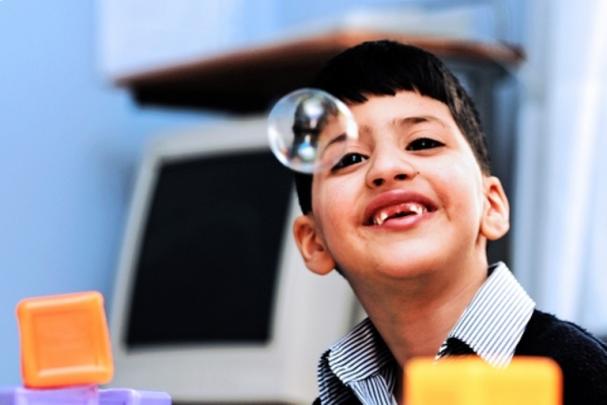Autism, Asperger syndrome and any disorders within the autistic spectrum present a range of unique characteristics that can be very difficult to deal with. Whether you are a relative or family friend of a child with autism, unpredictable behaviour sometimes makes it hard to know what you should and should not do. In the case of adults with autism, the social impact of symptoms is even more profound.
To help you find a suitable strategy for interacting with people with autism, here are a few useful guidelines to follow.

Understanding The Different Conditions Within The Autistic Spectrum
Occasionally, the term ‘autism’ is used as short hand for a wide variety of conditions. Some people with autism may have very mild difficulty with social interaction, being at the lower end of the overall autistic spectrum. At the other extreme, some people suffer with more profound problems, including not only serious social difficulty, but also issues with language and behaviour. As a result, these individuals often encounter significant learning difficulties.
There are three main types of Autistic Spectrum Disorder (ASD):
1. Classic Autism – The first defined form of autism, sufferers have problems with language, social behaviour and learning.
2. Asperger Syndrome – Often exhibiting milder symptoms, sufferers usually only encounter problems with social interaction.
3. Pervasive Development Disorder – Not Otherwise Specified (PDD NOS) – This is a term used to describe those people who exist somewhere on the Autistic spectrum, but do not have the clearly identifiable symptoms that define Classic Autism or Asperger Syndrome.
A very important step towards understanding how to behave around somebody with autism is taking the time to understand their condition. A good approach to this is to find out which specific symptoms the individual sufferer has, building up a more accurate picture than a one-word diagnosis.
Approaches To Children With Autism
Studies show that autism is rarely diagnosed in children below the age of 5. The simple reason for this is that many of the symptoms merely accentuate the difficulties encountered by every parent.
One example is an inability to cope with situations that don’t go according to a pre-conceived plan. This can be as simple as having to say ‘no’. Occasionally, children with autism will react aggressively in these situations, but this is very unusual. More commonly, autistic episodes are directed inwards. Children may bite their hand, hit themselves, or stiffen.
Of course, it is impossible to avoid these situations with a child. There will inevitably be times when a parent needs to say no, or things do not go according to plan. It’s sensible to always ensure that the child is well-prepared for the unpredictable. Consider the things that are likely to change or happen without notice, and explain these in detail before they happen.
Approaches To Adults With Autism
When you are dealing with an adult with autism, social issues become more noticeable and more difficult to work around. Some adults may be able to go out independently and, in that case, awkward or inappropriate social behaviour may draw unwanted attention.
You may be speaking with an adult autistic sufferer, or perhaps somebody who demonstrates the key symptoms but is unlikely to have a diagnosis. In either case, the key rule is to let the individual lead the conversation. There is no need to placate the individual, but simply talk to them about something that they want to discuss.
Autism Is A Condition, Not A Character Summary
Finally, the most useful tip for approaching adults with autism – and children – is to avoid sweeping generalisations. Autism is a medical condition, not a personality. Every individual sufferer will have different preferences and different characteristics, just like everybody else! One sufferer may be insular, preferring to lead a life of solitude. Others may be desperate to make friends, but just not sure how.
By taking the time to understand Autistic Spectrum Disorder and the range of conditions within it, you can evaluate every individual situation on its own merits, not on a template defined by this difficult illness.
Written by Kat Kreatzer, a blogger with several years of experience in the health-care sector, focusing on autism
Coping With Autism

